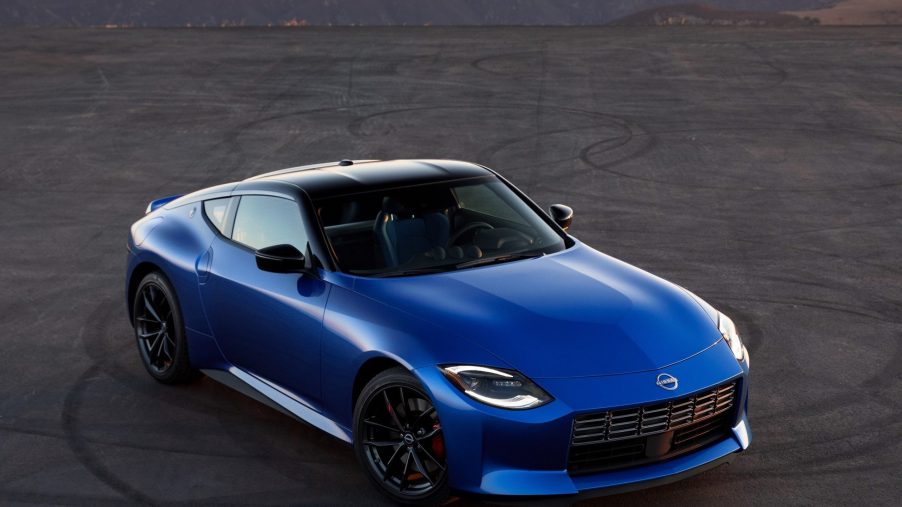
2023 Nissan Z Doesn’t Look or Sound Like a Warmed-Over 370Z
2023 Nissan Z vs. 370Z chassis and powertrain improvements article highlights:
- Although the 2023 Nissan Z shares a few things with the old 370Z, the vast majority of its parts are new or updated
- Nissan stiffened the chassis, revised the suspension, and overhauled the transmissions
- The 2023 Z uses the same V6 as the Infiniti Q60 Red Sport, not the 370Z
It’s delayed slightly, but the 2023 Nissan Z is coming to our shores and dealerships. But while its vintage-inspired design looks certifiably sporty, a few people are dragging their metaphorical feet over the new Z. Or rather, about how much it shares with the outgoing Nissan 370Z. However, it seems those claims of part sharing are more exaggerated than some think. And even if the 2023 Z does have a few 370Z parts, its engine and sound aren’t one of them.
The 2023 Nissan Z has some 370Z bones, but everything else is new and improved
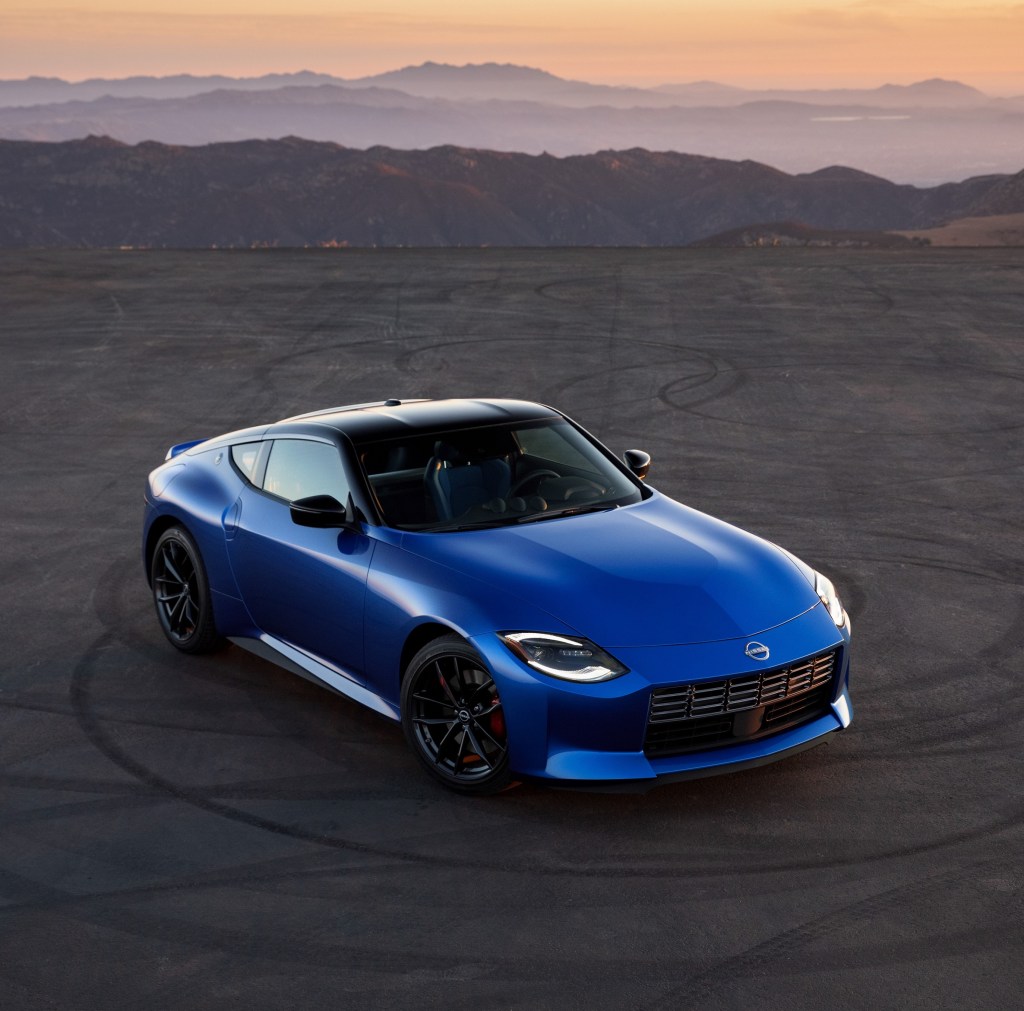
2023 Nissan Z overhead | Nissan 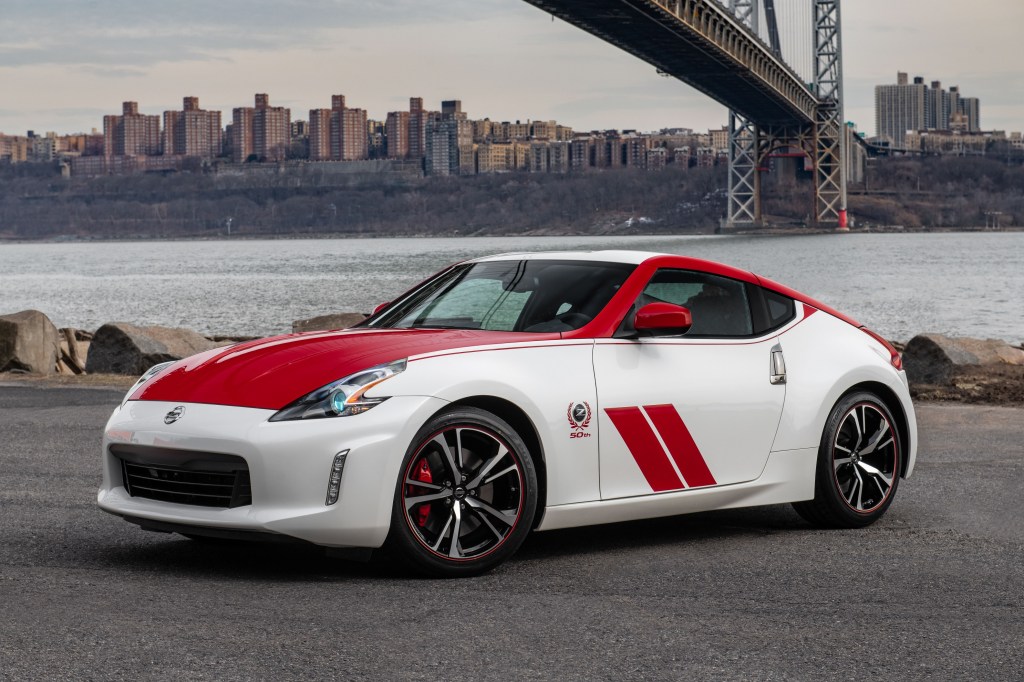
2020 Nissan 370Z Heritage Edition | Nissan
Now, platform sharing is extremely common in the modern car world. For example, Volkswagen’s MQB platform underpins the Golf, Jetta, and Tiguan as well as the Audi A3 and Q3. And those are just the U.S.-market cars. Also, GM builds the current Camaro on the same Alpha platform as the Cadillac CT4 and CT5. So, the fact that the 2023 Nissan Z uses the 370Z’s platform and chassis isn’t that shocking.
But don’t mistake re-using a platform for stagnant engineering. Yes, the 2023 Z’s structural hardpoints are broadly the same as the 370Z’s, MotorTrend says. And yes, some of the new sports car’s other parts are pulled from other Nissan models. However, roughly 80% of the 2023 Z’s parts “are new or revised,” including the carry-over ones, MT reports. Some changes are undoubtedly fairly minor. Others, though, are decidedly not.
What did Nissan change between the 370Z and 2023 Z?
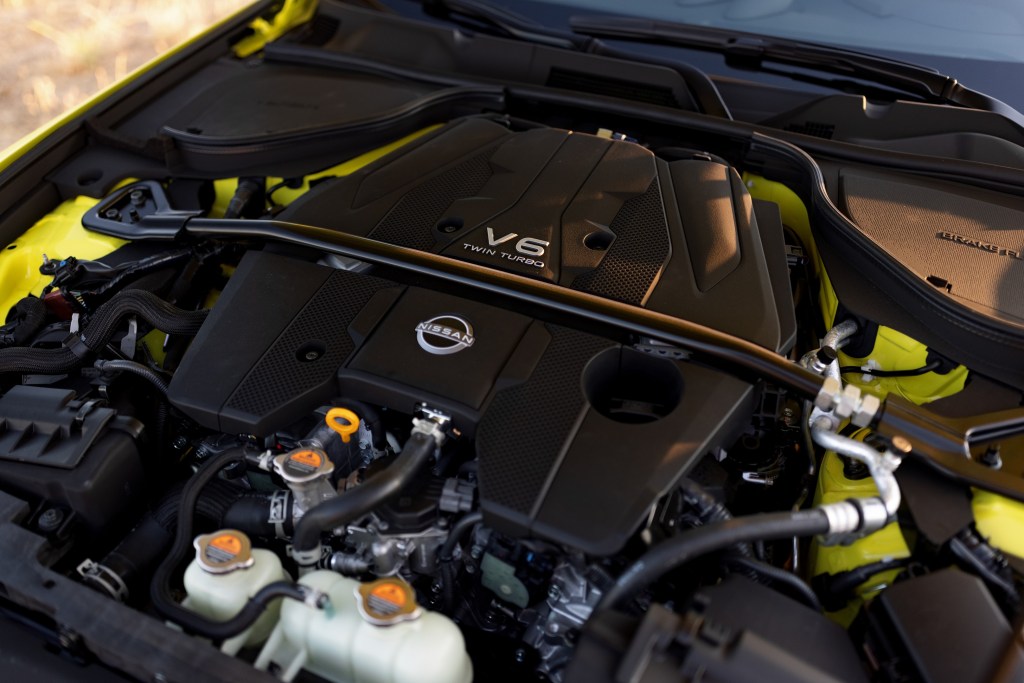
2023 Nissan Z Proto Spec V6 engine | Nissan 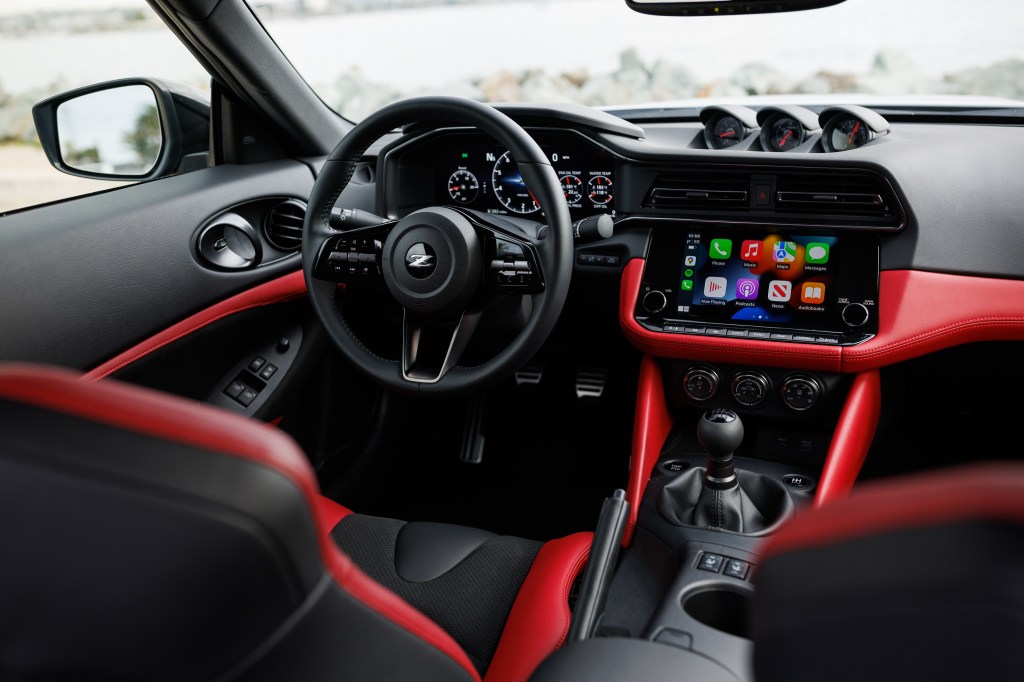
2023 Nissan Z manual front interior | Nissan
Firstly, the 2023 Nissan Z’s chassis is significantly more rigid than the 370Z one, thanks to new front-end parts, extra firewall bracing, and a front strut-tower brace. Secondly, the new Z has wider front tires; combined with the revised front suspension components, this makes for larger contact patches and (presumably) better cornering. Also, speaking of the suspension, Nissan swapped out the 370Z’s twin-tube shocks for lower-friction monotube ones. MT says this let the engineers stiffen the springs, anti-roll bars, and shock damping without ruining the ride.
In addition to the chassis changes, the 2023 Nissan Z also received some notable drivetrain upgrades. Sure, its new nine-speed automatic shares its guts with the Frontier’s and Titan’s units. However, it features new shift programming as well as a 44-lb-lighter magnesium case.
Furthermore, while the 2023 Z’s manual is from the 370Z, it has new gear linkage and redesigned 1st– and 2nd-gear synchronizers. Plus, the dual-mass flywheel has a new vibration absorber that sends energy back to the powertrain instead of venting it as heat. Nissan hasn’t put something like that in a manual car since the R34 Skyline GT-R, MT notes.
But that’s not the only GT-R-like feature the new Z has.
The 2023 Nissan Z’s V6 isn’t a 370Z engine—but it sounds a bit like a GT-R
| 2023 Nissan Z | 2020 Nissan 370Z | |
| Engine | 3.0-liter ‘VR30DDTT’ twin-turbocharged V6 | 3.7-liter ‘VQ37VHR’ V6 |
| Horsepower | 400 hp | 332 hp |
| Torque | 350 lb-ft | 270 lb-ft |
| Transmissions | Six-speed manual Nine-speed automatic | Six-speed manual Seven-speed automatic |
| Curb weight | 3486-3602 lbs | 3386-3417 lbs |
| 0-60 mph time | Official: TBD Estimated: 4.3 seconds (based on Nissan’s claims and Car and Driver‘s 370Z results) | 5.0 seconds (manual, Car and Driver) |
One of the Nissan 370Z’s defining characteristics—and the 350Z’s, too—was its raspy, warbly, tuner-friendly VQ V6. But while it has a V6, the engine in the 2023 Nissan Z isn’t a VQ-series powerplant. Instead, this twin-turbo V6 comes from the VR family, which also counts the current-gen GT-R’s 3.8-liter twin-turbo V6 as a member.
Admittedly, the 2023 Nissan Z’s V6 isn’t a GT-R engine; the latter car uses a VR38DETT V6. Instead, it’s the same engine the Infiniti Q60 Red Sport uses. However, though they’re noticeably different, they are related, Car and Driver says. And as the above on-track video shows, the 2023 Z doesn’t sound like a 370Z. Instead of a raspy warble, it has a more GT-R-esque liquid note.
But Nissan didn’t just slap the Q60 Red Sport’s V6 into the new Z and call it a day. Firstly, the Z’s version has a built-in anti-lag-like feature. When you lift off the accelerator, a recirculation valve opens and sends pressure back to the inlet to keep the turbine spooled, MT explains. Also, remember how the 2023 Z’s upgraded interior has a dashboard-mounted turbine speed gauge? It’s connected to a similar type of turbocharger turbine speed sensor the Ferrari 488 Pista uses, MT reports. And it could be useful in, say, unlocking some extra performance.
When will sports car fans get to see how new the Z really is?
As noted earlier, the 2023 Nissan Z launch recently got pushed back until summer 2022. Nissan still hasn’t released an official date, but the first press cars are starting to arrive. Therefore, dealerships will likely receive their allotments in the next few months.
So, if you’re still not convinced that the new Z isn’t just a hopped-up Nissan 370Z, you’ll soon get a chance to decide for yourself.
Follow more updates from MotorBiscuit on our Facebook page.


